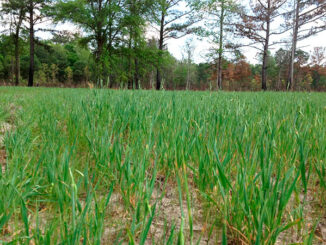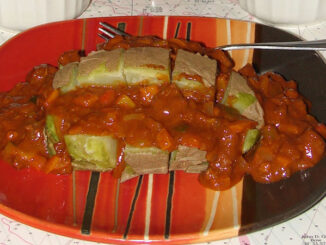
The opportunity to take a trophy buck comes early in the season for hunters in the Carolinas, while deer are still enjoying their summer break and a buck’s antlers are still covered in velvet. Naturally, bucks aren’t as wary because they haven’t been hunted for eight months, and keying on agriculture can make for a real hunting treat.
The U.S. Department of Agriculture reports that 75,000 active farms are producing crops on 7 million acres across the Carolinas. Many of these tilled acres are covered in soybeans, corn, peanuts and other high-value crops that ring the dinner bell for deer and other wildlife.
Hunters that who access to agricultural lands or whose hunting territory adjoins them understand the value of a late-summer crops in the first week or two of deer season. Rick Grubbs, the owner/operator of Waccamaw Hunting Services in Hemingway, S.C., knows big bucks and agriculture fields go hand in hand.
“Agriculture fields tend to be deer’s preferred food source during the summer and into our early hunting season when many bucks are still in velvet,” Grubbs said. “Peanut fields tend to draw and hold the most deer, followed by soybeans and corn.”
Grubbs manages 13,000 acres off the Pee Dee River in South Carolina’s Florence and Williamsburg counties, many of them in actively farmed areas where good bucks are taken every year.He said the best fields are secluded ones or the ones that get the least amount of human visitation. But deer are not ghosts this time of year, either. A good peanut or soybean field will hold large numbers of deer in daylight hours as long as they don’t get disturbed.
“A mature buck will utilize any field, as long as he feels safe. Even though deer are very acclimated to farmers, we make a point to minimize human intrusion that would disrupt the nature movements of our deer,” he said.
Grubbs glasses fields from a distance and determines where he wants to put up stands, using past experience as well as, topo maps and aerial photos. Then, he will get in and get out quickly, and he rarely uses trail cameras late in the summer.
“I have found that a lot of mature bucks will bed down just inside the woodline of a hot agriculture field or even right in the middle of it, so we make a point to stay out of the woods that border these fields and stay out of the hunting areas with trail cameras until we actually start hunting,” he said.
Deer will use late-summer fields day and night, but Grubbs only allow his hunters to hunt over these fields in the afternoons to prevent spooking deer that are already in the fields, feeding in the mornings.
“Whitetails tend to be very comfortable in (agricultural) fields, and I don’t like to disrupt them before the season with human presence. If you bump a mature deer in these fields early on, you will put them on alert and more than likely cease the daytime pattern,” he said.





Be the first to comment